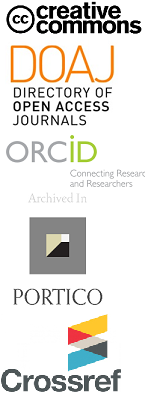Submissions
Submission Preparation Checklist
All submissions must meet the following requirements.
- The submission has not been previously published, nor is it before another journal for consideration (or an explanation has been provided in Comments to the Editor).
- The submission file is in OpenOffice, Microsoft Word, RTF document file format.
- Where available, URLs and DOIs for the references have been provided.
- All illustrations, figures, and tables are placed in the text at the appropriate points, not at the end. Endnotes are used sparingly and footnotes are not used. The submission contains no unnecessary formatting.
- If submitting to a peer-reviewed section of the journal, all efforts have been made to anonymise the submission.
- Please note: In the case of submissions in Afrikaans or Dutch please mark 'English" on the submission page.
- The text is single-spaced; uses a 12-point font; employs italics, rather than underlining (except with URL addresses).
- The text adheres to the stylistic and bibliographic requirements outlined in the Author Guidelines.
Privacy Statement
The names and email addresses entered in this journal site will be used exclusively for the stated purposes of this journal and will not be made available for any other purpose or to any other party. Personal data collected is dealt with in accordance with the South African POPI Act, South Africa's equivalent of the EU GDPR. Also view the Khulisa Journals Data Privacy Policy for more information.

 https://orcid.org/0000-0001-6465-6584
https://orcid.org/0000-0001-6465-6584


.png)